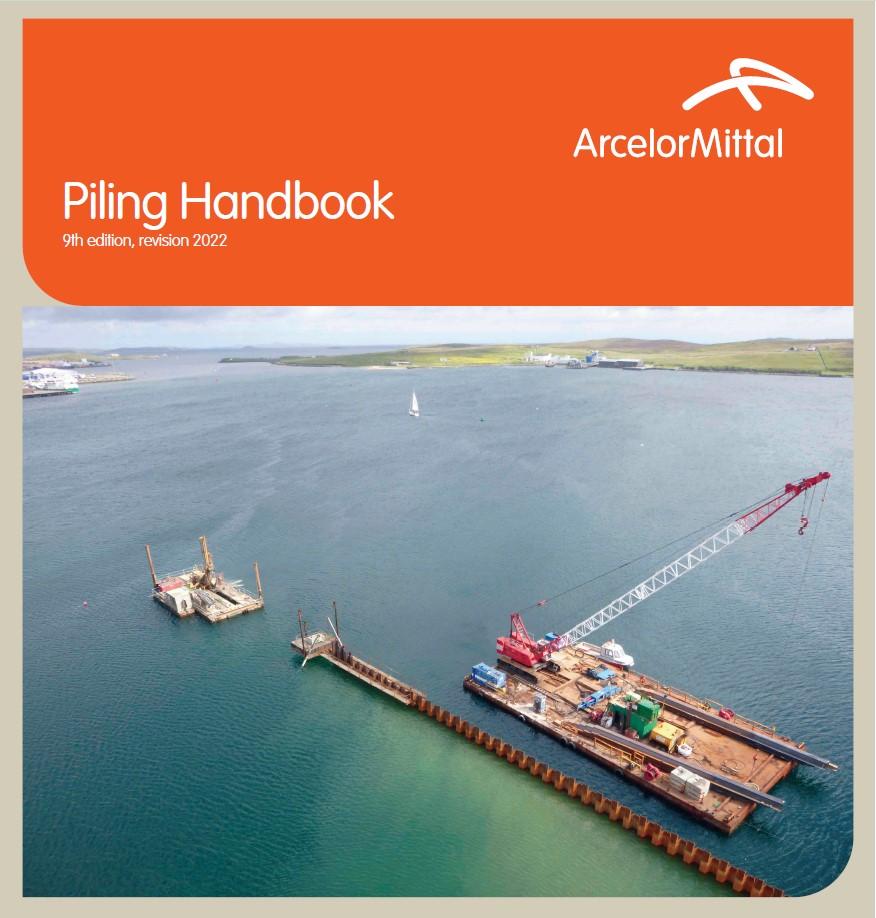The Piling Handbook (PHB) is the reference book for design engineers. It covers all aspects related to steel sheet piles and HP piles, including design and installation.
The Piling Handbook is intended to assist design engineers in their daily work and act as a reference for more experienced engineers. The 9th edition is a complete revision; all chapters have been reviewed and updated to align with the new European standards, including EN 1997-1 and EN 1993-5. A comprehensive design example has been added, and installation recommendations have been updated to reflect the latest technologies. Chapters 1 and 3 were revised in 2022.
The Piling Handbook has been a trusted reference in the steel piling industry for decades. Its main objective is to support design engineers and piling contractors in creating safe and cost-effective steel sheet pile structures. Additionally, it provides numerous practical tips for installation.
In the first revision of the 9th edition, our engineers focused on two key chapters and corrected some typos in other sections:
Chapter 1: Product Information. The product range is constantly evolving, with new, more cost-effective sheet pile profiles replacing older ones. This updated chapter reflects these changes. However, section properties for profiles that are no longer produced can still be found in Chapter 13.
Chapter 3: Sustainability and Durability. Today, environmental factors are a key consideration when selecting solutions. How can you compare the environmental footprint of different alternatives? What is a Life Cycle Assessment (LCA) or an Environmental Product Declaration (EPD)? Does the recycling rate affect the carbon footprint? You will find brief answers to these questions in this chapter. We also added a section on the durability of steel structures, which is one of the factors influencing environmental analysis.
Feel free to share your comments and suggestions for the 10th edition of the PHB via email.
 English
English




